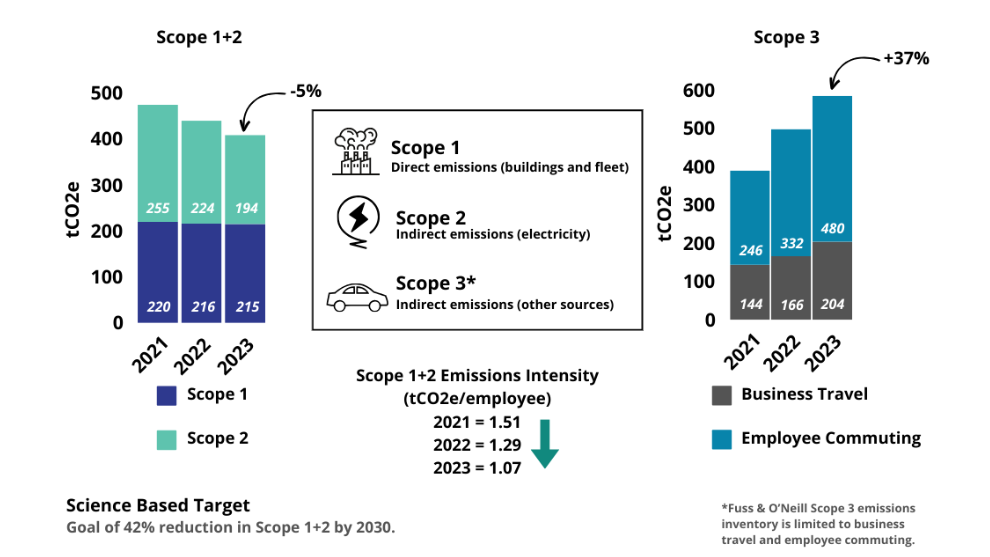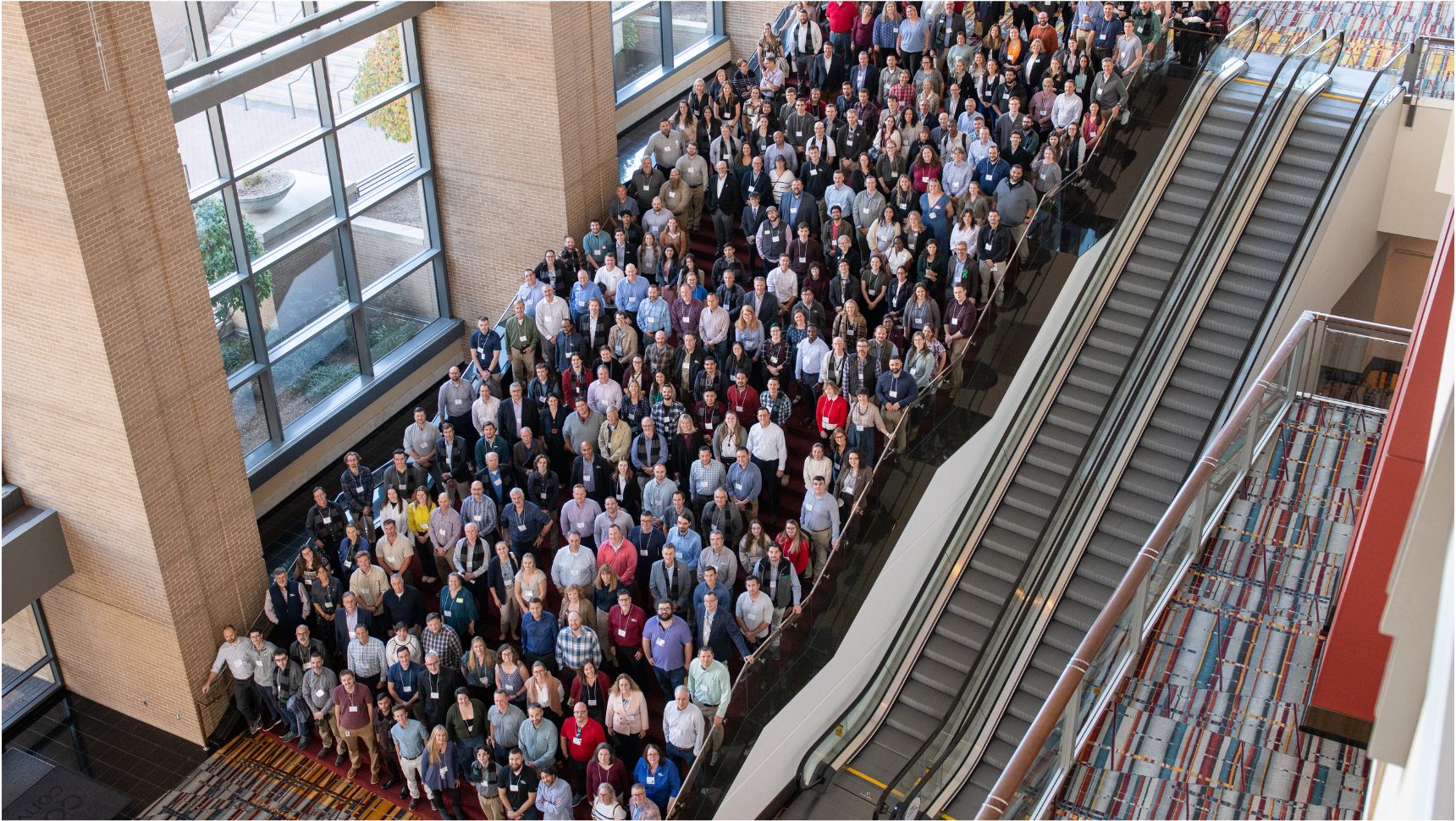In 2021, Fuss & O’Neill decided that one of the most impactful actions we could take to address climate change through our operations was the adoption of a science based emissions target. 2023 marked our second year of reporting against our target of a 42% reduction in our 2021 base year Scope 1 and Scope 2 greenhouse gas (GHG) emissions by 2030.
The goal was established through the Science Based Targets Initiative (SBTi) in 2022 and our inventory method is aligned with the with The Greenhouse Gas Protocol: A Corporate Accounting and Reporting Standard (GHG Protocol Corporate Standard), which is recognized as the global standard for calculating corporate GHG emissions. In addition to tracking our Scope 1 and 2 emissions from our office operations and fleet vehicles, we committed to tracking and working to reduce our Scope 3 emissions.
Our 2023 inventory shows a slight decrease (5%) compared to 2022 in our absolute Scope 1 & 2 emissions (409 tCO2e), and an overall 12% decline from our 2021 baseline inventory. The greatest contributor to the decrease is our Scope 2 emissions which decreased by 24% from our 2021 baseline, reflecting the use of renewable energy choice in our Boston, MA and Manchester, CT offices. Although we continue to grow in employees, our Scope 1+ Scope 2 GHG intensity continues to decline, dropping 29% from our 2021 baseline to 1.07 tCO2e/employee in 2023.

Fuss & O’Neill’s 2023 GHG Inventory Summary
We also continue to inventory business travel and commuting as these are typically substantial sources of Scope 3 emissions for professional services companies like ours. The 37% increase in Scope 3 emissions in 2023 (684 tCO2e), the majority of which was from increased employee commuting, reflects both the 22% growth in employees from 314 in 2021 to 384 in 2023 and an increase in post-COVID19 pandemic in-person work. As Fuss & O’Neill grows, identifying ways to reduce Scope 3 emissions will be challenging. Selection of office locations that allow convenient public transportation options and electric vehicle (EV) charging as EV adoption expands, as well as continued support for hybrid and remote work, will be strategies we employee to address the challenge.
Now in our 4th year of conducting our GHG inventory, the process continues to inform both how we consider our business operations and our approach to supporting our clients in their GHG inventory and reduction efforts. Since setting GHG targets through SBTi, we have intentionally incorporated metrics for energy use, electricity sources, and public and active transportation access into our evaluation of office locations. Similar to how we approach sustainability strategy and implementation with clients, we look for value creation opportunities that simultaneously reduce GHG emissions and provide cost savings, enhance operational efficiency or increase employee hiring, engagement and retention.
I look forward to continuing to report on our progress as we take action to reduce global GHG emissions and I invite our clients, collaborators, and peer consulting firms to join us in this important work.
♦tCO2e = metric tons (t) of carbon dioxide (CO2) equivalent (e) – is a standard unit for GHG emissions
About Diane Mas, PhD, REHS/RS, CC-P
Diane Mas, PhD, REHS/RS, CC-P is a Chief Resilience & Sustainability Officer at Fuss & O’Neill, and a founding member of the company’s environmental impact assessment practice. Her focus is on climate change resiliency and adaptation for water resources and the relationship between water quality and public health.
Stay Informed
We keep up-to-date on developing technologies, emerging concerns, climate projections, and new regulations. Subscribe to be the first to know how these ever-changing industry topics impact you and how we’re responding.
"*" indicates required fields



